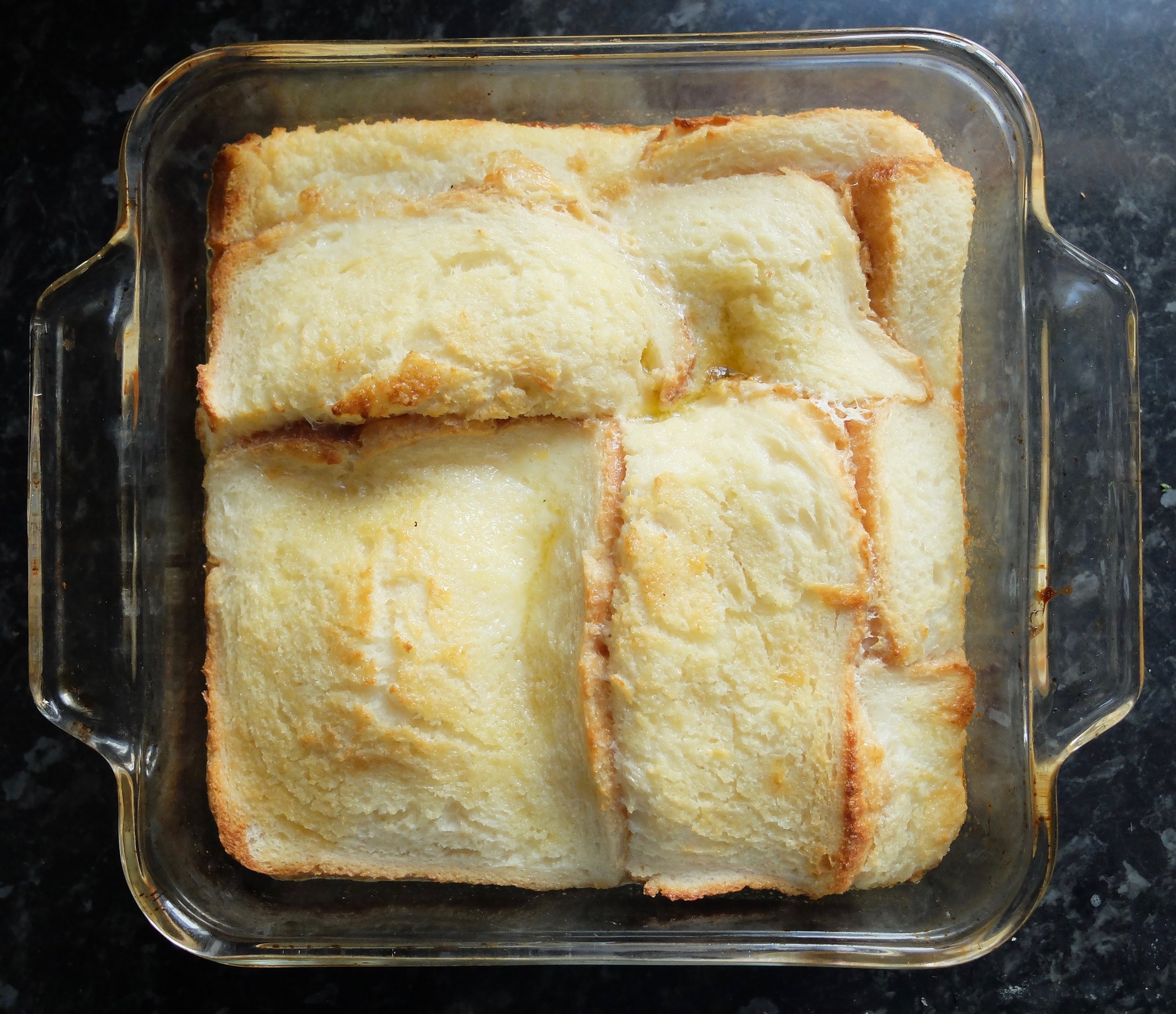Custard Bread Pudding
/I don't want to brag (yes I do), but I have figured out why people always talk about buying bread and milk when bad weather rolls in, and the answer is simple: bread pudding.
I know it's technically March and we all thought spring was on the way, but if you're stuck under a blanket of snow dealing with the Beast from the East, then this is the perfect thing for you to make today. I mean, I literally got out of bed this morning with no intention of making it, and half an hour later I had a heaping serving for breakfast with a cup of tea, and 10 minutes after that, I'm here telling you about it. If you did any kind of prep for this snow storm, you have the ingredients for this bread pudding. It makes as good of a dessert as it does a luxurious breakfast, and why are you even still here when you could be in your (ahem, warm) kitchen whipping this up?
This is a custard-heavy bread pudding, meaning that the finished product is basically a crisped, toasty layer of bread atop a thick, sweet custard you can sink your spoon into, which is why it doesn't require much bread. If you prefer a 'breadier', more rustic pudding similar to a baked french toast, you can amp up the bread by cutting it into chunks and filling your pan.
If your cupboard is not bare, you can dress this up with a spoonful of vanilla, almond extract, or orange blossom water. Add texture with ½ of an orange's worth of zest, or a small handful of dried cherries or even some toasted chopped pecans for crunch. Sprinkle the finished dish with cinnamon, nutmeg or cardamom for a hint of spice, or just go for broke and have it plain- you won't regret it.
The verdict:
5 spoons out of five. Nothing this easy to make on a frigid day should receive anything less.
One year ago: Mocha Cake with Caramel Frosting
two years ago: Western Swiss Steak
three years ago (new!): Crepes
the recipe:
Custard Bread Pudding
the directions:
Preheat the oven to 175C/350F.
Butter your baking dish.
Toast the bread until just crisp but not yet browned.
Butter the toast, then brush with the 3 tbsp of milk and press into the bottom of your baking dish, slicing to fit if necessary.
Meanwhile beat eggs until foamy, then add sugar and beat until smooth and uniform.
Add milk and beat until well-blended.
If using vanilla or any other extracts, add them now.
Pour egg mixture over toast in baking dish and press bread back down, making sure it's fully saturated (it will float, but as long as it's saturated, you're good to go).
Bake 20-25 minutes until centre of dish just jiggles when you nudge it.
Sprinkle with cinnamon, if desired, and serve warm.
the ingredients:
Butter
2-3 slices of bread (3 slices of standard sandwich bread will neatly fill a 9-inch square baking dish, use less according to your plate size)
2 c + 3 tbsp milk, divided
3 eggs
1 c sugar
Optional garnishes according to your taste (see above for suggestions)

















